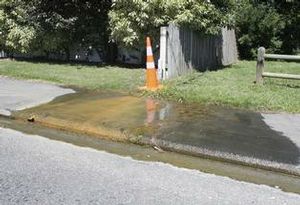To cut a pretty long story short, I have purchased a boat in as-is condition.
Note-worthy issues that were pre-existing were:
- Engine – unknown condition, sorry I havent had the chance to document this, however, we’ll just say the compression was not the best upon purchase, impeller gone, and the carbie was in dire need of some looking after and tuning.
- Hull – had not been maintained in what seemed like forever, but although not pressing for repair I managed to drop it and turned a winter project into summer one (instead of fishing).
The build of this project will not focus on the engine but the latter.
So here, here we are..a boat that’s been dropped from about 2 meters high (off my Suzuki Tracker) and along with the damages to the car I also managed to do a few numbers on the boat too.

This is what the project will entail what the picture below shows plus the following:
- Filling both front and rear hulls with expandable foam.
- Budget paint job outside and inside the boat. Black/White + “Homer” in Yellow.
- Putting a box under the chair (for anchor and such).

Below are the two damaged hulls:
Front – note how the damage that would make the boat non-water-tight.

Rear – the seat has come unstuck and there is no engine support:
I started with the rear. Removal of the “seat was done with two large flat-head screwdrivers. The picture also shows the area grinded back.
The seat required a bit of work to clear away the old resin (about 3 hours actually – for only one seat). Note the damage to the fiber.

 For this repair, I just bought a $50 Fiberglass repair kit. This came with the catalyst and cleaner. There was 500ml of Polyester – about right to get the job done.
For this repair, I just bought a $50 Fiberglass repair kit. This came with the catalyst and cleaner. There was 500ml of Polyester – about right to get the job done.
Advise before beginning from seasoned experts:
- Mix – measure 5 times Mix once. Application temperature will affect the mount of catalyst you will be needing.
My resin required a %2 mix – Apparently! The factory specifications hardened the mix in 2 minutes. I used % 0.35 mix.
Try a small quantity first then adjust accordingly.
If the mix is too weak (not enough catalyst it will not harden. Too strong – unusable. - Use hot air to start reaction if your mix is too weak.
- Ensure there are no air bubbles.
- CLEAN thoroughly before application.


Similar situation in the front; two screwdrivers one following the other so to space the tip entry points. At this point I also decided that the blue piping on the front will be replaced with black piping.

Next up came the fiber work to be done on the front hull (after the grinding and sanding of course – hope you like white powder).


Thanks for the quick read of Part 1. Part 2 is soon to follow.


